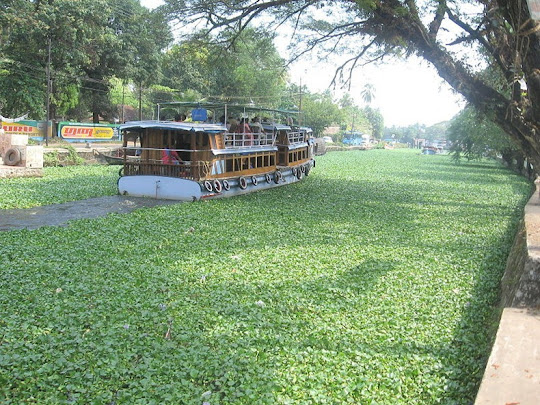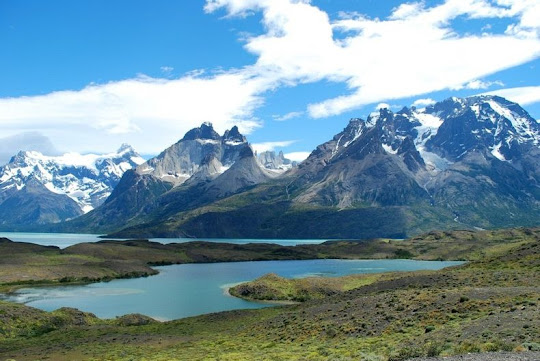1 210.212.211.135:8080 HTTP HIA India (Yanam) 210.212.211.135 28-jul-2012 15:38
2 117.211.123.62:80 HTTP ANM India (Visakhapatnam) 117.211.123.62 28-jul-2012 15:00
3 122.170.73.103:3128 HTTP NOA India (Mumbai) ABTS-mum-dynamic-103.73.170.122.airtelbroadband.in 28-jul-2012 12:39
4 14.140.93.30:3128 HTTP NOA India (Mumbai) ! 14.140.93.30.static-mumbai.vsnl.net.in 28-jul-2012 12:16
5 125.16.69.114:8080 HTTP ANM India (Delhi) AES-static-114.69.16.125.airtel.in 28-jul-2012 01:05
6 117.239.105.164:6588 HTTP HIA India (Madras) 117.239.105.164 28-jul-2012 00:24
7 14.139.228.242:8080 HTTP ANM India (Delhi) 14.139.228.242 28-jul-2012 00:23
8 117.211.123.62:3128 HTTP ANM India (Visakhapatnam) 117.211.123.62 28-jul-2012 00:02
Paradise & Fairytale Caves
Hidden in the thick tropical forest of Vietnam is a land of phenomenal caves. Phong Nha-Ke Bang National Park contains the oldest major karst area in Asia; the karst is believed to have formed 400
million years ago, during the Palaeozoic era, With every cave discovery, that cave is considered the largest and longest in Phong Nha-Kẻ Bàng, only to learn later that yet another even more massive cave has been found. This national park is home to the largest cave in the world and is said to be the home of the many of the world’s most beautiful caves. It’s famous for its cave and grotto systems, about 300 caves and grottos, of which only 20 have been surveyed by Vietnamese and British scientists. UNESCO named it a World Heritage Site for its geological values. Spectacular stalactites and stalagmites create an underground fairy-tale-like world where formations look like the caves possess jagged teeth or home to strangely alien trees. Visitors to Phong Nha-Ke Bang National Park most often visit the massive Paradise Cave and huge Phong Nha Cave as seen below. If you don’t expect to ever travel to Vietnam, then here is a virtual trip to see the mysterious and massive world hidden beneath Phong Nha-Ke Bang National Park

Phong Nha-Ke Bang National Park contains the oldest major karst area in Asia. Protecting those caves is the reason for the park and also why it was named a UNESCO World Heritage Site. This cave is called Thien Duong (Động Thiên Đường) and is over 19 miles (31 km) long.
The British cave explorers were so impressed by the beauty of the rock formation inside
the cave, they dubbed this place as “Paradise Cave.”

Stalactites, formed by dripping, hang from the ceiling of the limestone cave. The height of underground Paradise reaches 328 to 492 feet (100 – 150 m) wide.

Formations in Vietnam’s Thien Duong Cave. More stalactites and the flowstone which is like a sheet and can be seen on cave floor and walls.

The national park was created to protect one of the world’s two largest karst regions with 300 caves and grottoes.

Traveling inside Phong Nha Cave. This cave, from which the name to the whole system and the park is derived, is famous for its rock formations which have been given names such as the “Lion”, the “Fairy Caves”, the “Royal Court”, and the “Buddha”. This cave is 25,357 feet (7,729 m) long, contains 14 grottos, with a 45,830 foot-long (13,969 m) underground river. The scientists have surveyed 27.65 miles (44.5 km) of grottos in this cave so far; tourists can only penetrate to a distance of 4,921 feet (1500 m). Stalagmites rise from the floor of limestone Phong Nha-Ke Bang National Park Paradise Cave.

Fluorescent lighting to highlight stalagmite and stalactites for tourists in Vietnam’s Paradise Cave. Imagine coming upon this is complete and utter pitch darkness as the original cavers did.

Explore Phong Nha-Ke Bang National Park. Have you considered living deep in a cave to survive if something catastrophic happened to the world? It would not be the first time that people have hidden from their enemies and their enemies have hidden from them inside the caves, hidden in the tropical forest of Phong Nha-Ke Bang National Park.

Some 92% of Phong Nha-Ke Bang National Park is covered by tropical forest.
The mist adds more mystery to this national park, the fifth UNESCO recognised site
in Vietnam after Ha Long Bay.

The path through the jungle leading up to the Paradise Cave.

Besides the grotto and cave systems, it is said that Phong Nha has the longest underground rivers, the largest caverns and passageways, the widest sand banks, and the most astonishing rock formations in the world. This is one the underground river cave entrances.

Swimming in Phong Nha Cave. According to UNESCO, “The active river caves are divided into the nine caves of the Phong Nha system discharging to the Son River, and the eight caves of the Vom system discharging to the Chay River. The Phong Nha Cave is the most famous in the entire system, with a currently surveyed length of 44.5 km. Its
entrance is the last part of an underground river that connects with the Son River and tour boats can penetrate inside to a distance of 1,500 m. Other extensive caves include the Vom cave at 15 km in length and the Hang Khe Rhy cave with a length of 18,902 m.”

An extremely fragile
environment, Vietnam Phong Nha-Ke Bang National Park caves are thought to have been evolving since 464 million years ago.

Spectacular stalagmites inside Vietnam’s Paradise Cave. There are other kart formations called drapes, columns, straws, chandeliers, broomsticks, totem poles and flowstone.

Right around the time that National Geographic released a feature about the newly discovered Song Doong — World’s Biggest Cave — this cave, Thien Duong aka Paradise Cave opened for tourism. Before that, Thien Duong had previously been thought to be the world’s biggest cave. The karst formation process in Phong Nha-Ke Bang National Park has resulted in many features like underground rivers, dry caves, terraced caves, suspended caves, dendritic caves and intersecting caves.

Vietnam Paradise Cave formations.

Phong Nha cave, size of man compared to the size of the formation.

Tien Son cave aka Fairy-tale cave has no underground river and is a dry cave. It was named Fairy-tale Cave because its inside landscape is similar to something out of a fairy-tales. Tien Son is 980 m in length. A 10 m deep hole is situated 400 m from the entry mouth, then a 500 m long underground cave, dangerous for tourists and open to professional expeditionists only. Thus we are again looking at Paradise as opposed to Fairy-tale Cave.

Bizarre formations. Notable caves and grottoes in the Phong Nha Cave system include: Dark Grotto which is 17,250 ft (5,258 m) long and with a height of 272 ft (83 m); E Grotto which is 2,414 ft (736 m) long, Cha An Grotto is 2,188 ft (667 m) long; Thung Grotto has an underground
river of 10,994 ft (3,351 m), with the height in some part exceeds 436 ft (133 m); En Grotto is 5,396 ft (1,645 m) long, 257 ft (78.6 m) high; Khe Tien Grotto which is 1,706 ft (520 m) long; Khe Ry Grotto and Khe Thi Grotto.

Left: A linga-shaped stalagmite. Right: “Cyrtodactylus phongnhakebangensis, a recently discovered cave-dwelling species, lives only in Phong Nha Ke Bang park (hence the name).”

Inside a cave at Phong Nha-Ke Bang National Park. The Vom Grotto is a 9.3 miles (15.05 km) long, 475 ft (145 m) high grotto with several underground rivers, pools. It has several spectacular stalagmite and stalactites. British Cave Research Association scientists found an abyss in Vom Grotto, the deepest hole in Vietnam, and named it Tang hole. It’s over 836 feet (255m) deep.
 The list
The list seems endless within the national park’s Vom Cave systems: Dai Cao Grotto is 5396 ft (1645 m) long, 91 ft (28 m) high; Duot Grotto has a length of 2.4 miles (3.927 km) and height of 147 ft (45 m); Ca Grotto is a 4,921 ft (1,500 m) long, 203 ft (62 m) high; Ho Grotto is 5,301 ft (1,616 m) long and 150 ft (46 m) high; Over Grotto is a 10,643 ft (3,244 m) long and 337 ft (103 m) high with the width from 98-164 ft (30–50 m); Pygmy Grotto is 2,772 ft (845 m) long; Ruc Caroong Grotto is the habitat of Arem ethnic group.
They live in the caves, grottos and on hunting, harvesting natural products.

The photographer wrote, “Wow! Paradise Cave.” The park protects the
ecosystem of limestone forest of the Annamite Range region in north central coast of Vietnam.

The size of Phong Nha and Paradise caves and the formations hidden inside are truly stunning.

Besides the formations, the spectacular system of underground rivers and passages still have some 10th century Cham altars.

In Phong Nha Cave.

A small gallery and platform, cut into the limestone. This cave was apparently used by VC.

Can you imagine a cave that is five times
larger than the Phong Nha? Well there is even if Phong Nha cave was once upon a time believed to be the biggest cave in Vietnam.

Entrance and hanging ladders at this Phong Nha-Ke Bang National Park cave.

Boats for cave-hopping tourists.

Tien Son cave in Phong Nha-Ke Bang. There are about 500 stairs up to entrance of Paradise cave, and another 100-200 stairs down inside Thien Duong aka Paradise Cave.

Who knows what all is still to be discovered in the jungles at Phong Nha-Ke Bang National Park?

Overlooking the national park in Central Vietnam.

At the doorstep of the park is seems much less difficult to comprehend how such huge caves can remain hidden in the dense jungle. What might it be like to visit pristine caves that are not setup as tourist attractions?

The world’s largest cave managed to remain hidden for all this time; it is thought that finding this cave is only scratching the surface. Hang Son Doong has a jungle inside and a skyscraper could fit inside it too. And the end is out of sight. “Like a castle on a knoll, a rock formation shines beneath a skylight in Hang Son Doong. A storm had just filled the pool, signaling that exploring season was coming to an end.”
Source
























































